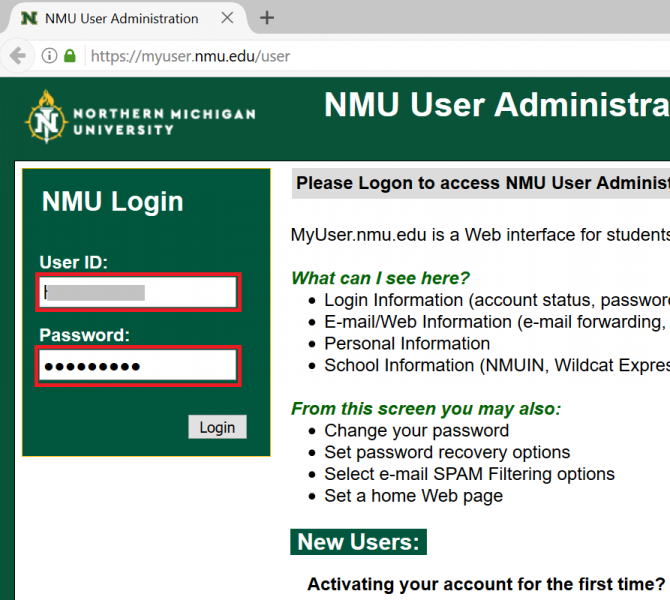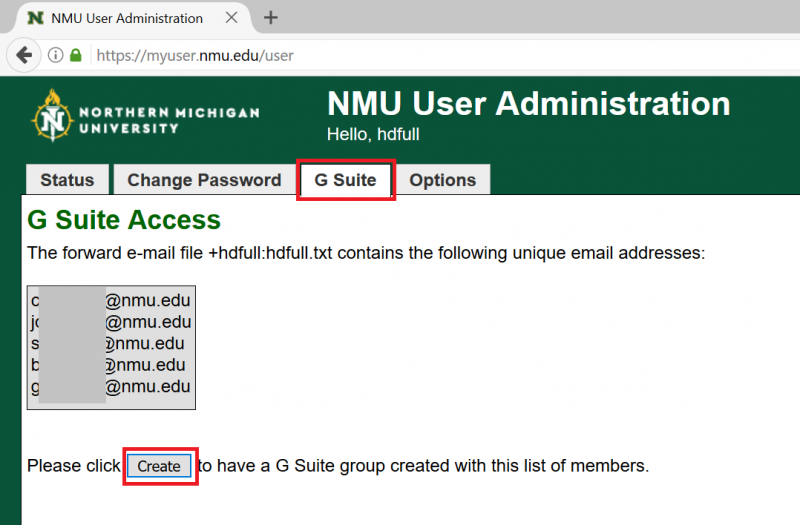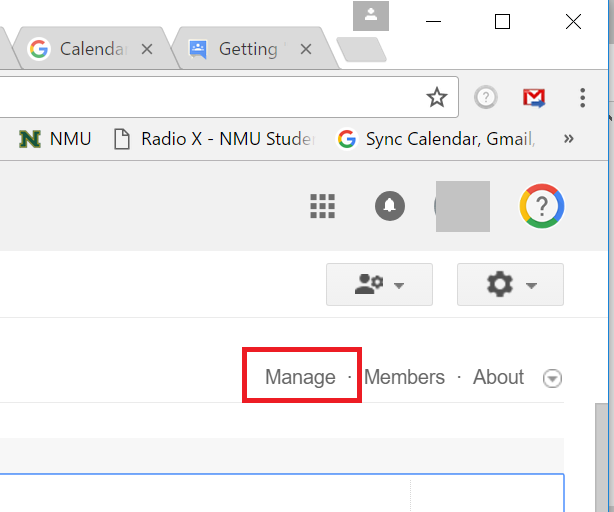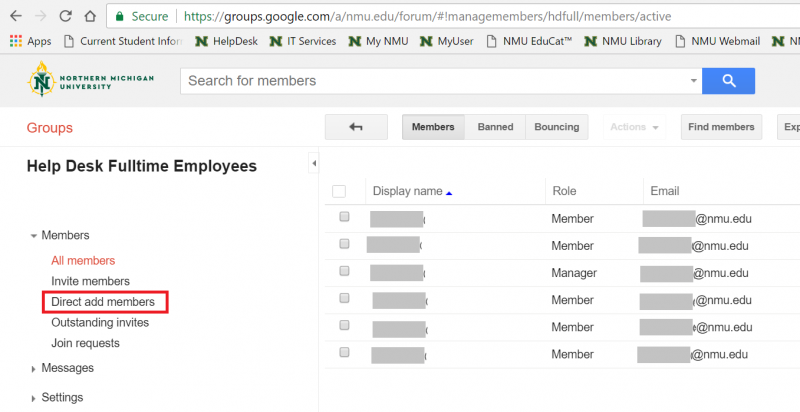Changing your NMU organization account to a G Suite Group
This process will create a G Suite Group for an NMU organization account such as Biology@nmu.edu or ASNMU@nmu.edu. The NMU organization account “E-mail Forwarding” settings (available under the "Options" tab in Myuser.nmu.edu/user) will be used to create members of the Google group during this process. If the NMU organization account is being used to forward mail, those email users are not required to be opted into G Suite. Every NMU organization account has an individual’s NMU email account as the sponsor. The sponsor will become the manager of the created Google Group. Once the process is complete the management of the G Suite group settings will then be available at http://groups.nmu.edu.
NOTE: If an organization account is being used for calendar access on the exchange server then the sponsor should contact the NMU HelpDesk. This would require a manually configured set up of the G Suite Group.
NOTE: The sponsor of the organization account is required to be opted into G Suite with their personal NMU account prior to adding the organization to G Suite.
The following steps may only be performed by the sponsor of the NMU organization account to create the G Suite Group that will use the NMU organization account email address.
- Log into https://myuser.nmu.edu/user using the organization account ID such as 'biology' and the sponsor’s personal NMU email password.

- Click the “G Suite” tab. If an email forwarding forwarding file is used for the NMU organization account the email address(es) will be displayed. You can update these later if needed. Click the “Create” button.

- The system will display the progress of creating the G Suite Group. If the process completes successfully you will be shown a link to the G Suite group management screens. Occasionally the process may fail, if this happens please wait 5 minutes and try again.

- If you are not already logged into G Suite, log into http://groups.nmu.edu with your NMU email address and password, click on the “My groups” button.

- Click the link for the group you want to work with (HelpDesk Fulltime Employees in this example).

- Click the “Manage” link in the upper right corner of the window.

- You can now verify, change, or add any email list members. If the NMU organization account was not set to automatically forward messages but only checked by others who logged in to view the mail then you should add the email accounts of the people who need access to the group email using the “Direct add new members” link.

- If you or others want to send mail using the organization account you will have to add the group’s email address to your email account settings in gmail. To do this you don’t need to be the owner of the group but you do need to be able to get mail sent to the G Suite group. See: Send emails from a different address or alias - Gmail Help - Google Help
How your office handles the messages sent to the group can be done in different ways. Those in the group can decide how they want to be notified of new messages, if they are notified at all, or if they just check the group at https://groups.google.com and process the messages from there. By default NMU G Suite groups are set up as email lists. The manager of the group can also "add collaborative inbox features to an existing group" which are especially useful for technical support or customer service teams. For example your support staff will receive your customers' messages, and they can do any of the following from the group's Topics view:
- Assign responsibility for a topic to a member of the group
- Mark a topic as resolved
- Edit the tags associated with a topic
- Filter topics according to tag, resolution status, or assignee
A good solution for departments wanting to use a google group like a previous NMU organization account is covered in "Using a Google Group like a previous NMU organization account".
More information about using and setting up Google Groups is available at the Google Groups Help Center.
